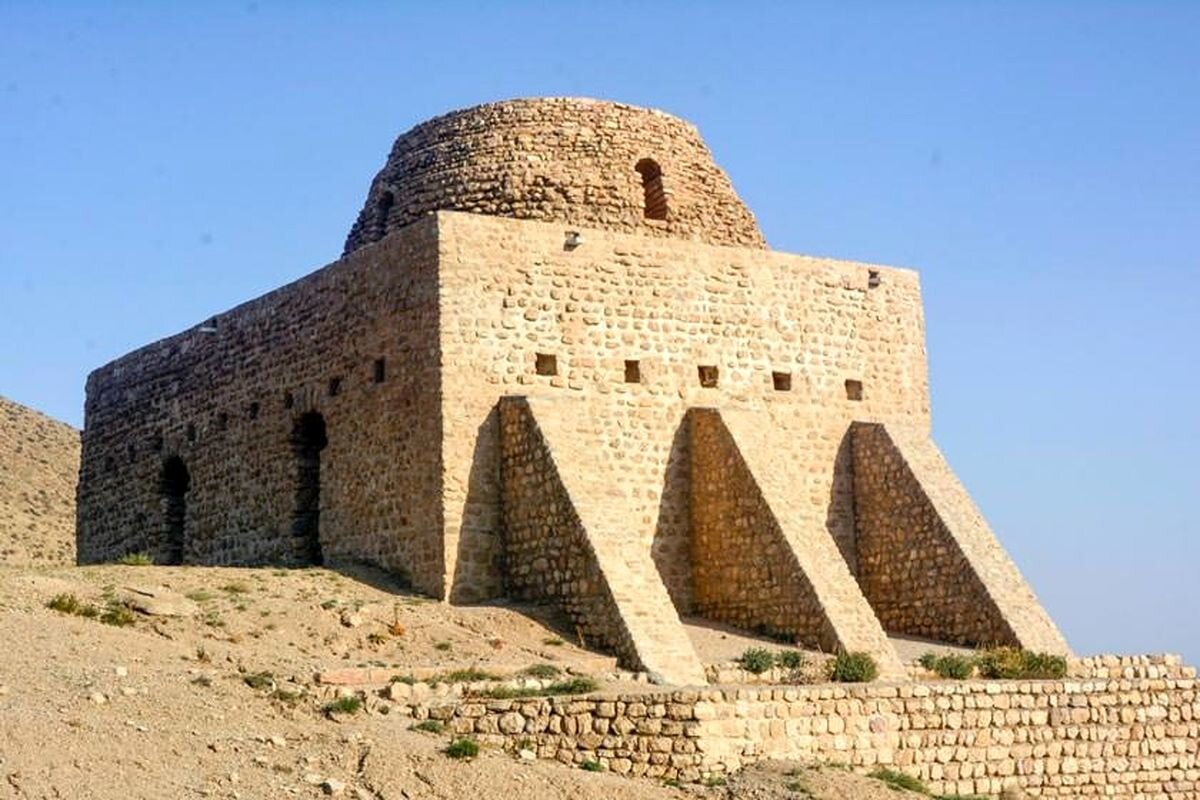Flames of the past: discover temple’s enduring legacy in northeast Iran

TEHRAN - The fire temples, remnants of ancient times on the Iranian soil, continue to grace the mountain peaks and heart of the plains with their enduring presence.
Although their flames may no longer flicker, the magnificence and grandeur of their historical significance resonate through the graceful arches that adorn them.
Among these venerable structures, Atash-Kadeh Espakhu stands as one of the oldest surviving edifices in North Khorasan, Iran.
According to Visit Iran, Archaeological excavations unequivocally trace the origins of Espakhu fire temple to the illustrious Sassanid dynasty. Situated near a village sharing its name, Espakhu is a linguistic evolution from the Pahlavi term “Hesp” or “Esp,” gradually transforming into “Asb,” meaning horse.
Despite some speculating that Espakhu might have served as a church, the absence of supporting documents leaves such claims unverified. However, the circular layout of the altar, the presence of a fireplace, and strategically placed openings in the dome’s ceiling—allowing smoke to escape—all point decisively to Espakhu’s true identity as a fire temple.
Internally, the temple assumes a square shape, featuring entrances on the north, east, and south sides. The north and south entrances serve as exterior access points, while the east entrances connect the main room to a terrace. Notably, the blind windows on the north and south façades bear a striking resemblance to Achaemenid architectural models.
Espakhu’s architectural elements reflect a harmonious blend of religious and governmental influences, with a predominant stylistic imprint from the Sassanid era. Given its geographic location and religious significance, the temple plays a pivotal role in archaeological research in the region. Discovered in 1975 by a team of archaeologists, Espakhu was subsequently recognized as a national heritage site. The surrounding landscape, once abundant with gardens and fields, has now dwindled to a few fruit orchards. This stone marvel sits proudly, 115 kilometers from Bojnurd en route to Golestan Forest, and over fifty kilometers from Ashkhaneh city.
The Sassanid era is of very high importance in the history of Iran. Under the Sassanids, Persian art and architecture experienced a general renaissance. Architecture often took grandiose proportions, such as the palaces at Ctesiphon, Firuzabad, and Sarvestan, which are amongst the highlights of the ensemble.
Crafts such as metalwork and gem engraving grew highly sophisticated, yet scholarship was encouraged by the state. In those years, works from both the East and West were translated into Pahlavi, the language of the Sassanians.
Rock-carved sculptures and bas-reliefs on abrupt limestone cliffs are widely deemed as characteristics and striking relics of Sassanian art, top examples of which can be traced at Bishapur, Naqsh-e Rostam and Naqsh-e Rajab in southern Iran.
In 2018, UNESCO added an ensemble of Sassanian historical cities in southern Iran — titled “Sassanid Archaeological Landscape of Fars Region”-- to its World Heritage list. The ensemble comprises eight archaeological sites situated in three geographical parts of Firuzabad, Bishapur, and Sarvestan. It reflects the optimized utilization of natural topography and bears witness to the influence of Achaemenid and Parthian cultural traditions and Roman art, which later had a significant impact on the architecture and artistic styles of the Islamic era.
The Sassanid archaeological landscape also represents a highly efficient system of land use and strategic utilization of natural topography.
AFM
Leave a Comment